Abydus (Çanakkale)
Q336446Abydus: city on the southeastern shore of the Hellespont, modern Çanakkale.
Abydus, already mentioned by Homer in the Iliad, note was an important Greek city on a promontory on the southeastern bank of the Hellespont. That it was easy to cross the straits on this place, can already be inferred from the poems of Homer. The town was founded in the seventh century BCE as a colony of Miletus, with permission of a Lydian king, either Gyges or his son Ardys.
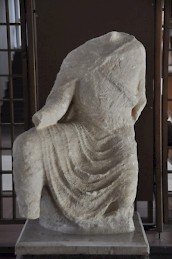
When Lydia became part of the Achaemenid Empire, Abydus must have been added to the new state as well, because Greeks from the city joined the Ionian revolution against the Achaemenid king Darius I the Great. The revolt was eventually surpressed.
Between Abydus and Sestus (on the European shore of the Hellespont), the Persian king Xerxes bridged the strait in 480 and crossed from Asia to Europe (text). After his attempt to conquer Greece had failed, Abydus joined the Delian League, the Athenian coalition, but during the Ionian or Decelean War, the city revolted and joined the alliance of the Spartans, who used Abydus as naval base. The divided Greeks were an easy target for Persia, and in 387/386, the town was again occupied by Achaemenid troops. In 334, Alexander the Great used the city as his bridgehead when he invaded Asia.
According to Appian of Alexandria, the Seleucid king Antiochus III the Great fortified the city.note The city became Roman, and was still of some importance in the Byzantine age, when the emperor Anastasius (r.491-518) decreed a law about the passage through the Hellespont.
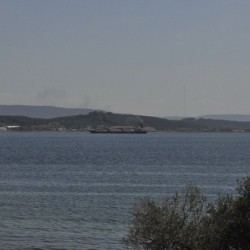 The Abydus promontory, from the northwest |
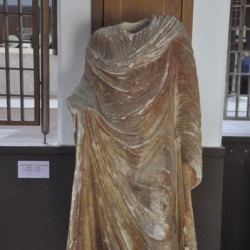 Abydus, Statue of a woman |
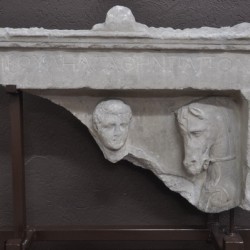 Abydus, Roman tombstone |
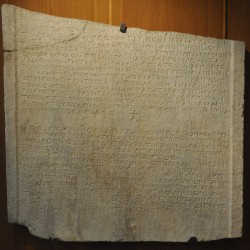 Abydus, Anastasius' passage law |